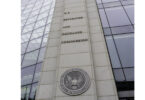Today Paxos Trust announced that Nomura’s Instinet and Credit Suisse achieved T+0 settlement for U.S. listed equities using the Paxos Settlement Service, which runs on a permissioned version of the ethereum blockchain. Société Générale is also a platform participant.
Two trades during the day, including one at 3 PM, were settled at 4.30 PM ET the same day. It’s usually possible to achieve this conventionally, but only if trades are executed before 11 AM.
“We’re excited to make progress in forging a path to faster settlement times at lower costs in public equities,” said Emmanuel Aidoo, Head of Digital Assets Markets at Credit Suisse. “These advancements will ultimately benefit the broader market as more firms join the platform.”
The post-trade solution launched a year ago and has been operating on the conventional T+2 settlement cycle and is interoperable with legacy systems. As previously reported, the platform is running under a no-action relief letter from the SEC until October and can only have seven participants who each have to have more than $100 million in capital. There are also limitations on the types and volumes of stocks that can be settled.
If the SEC gives the platform the green light, it plans to offer the flexibility of T+0 or T+2 settlement, including multilateral netting in real-time.
“Settlement in U.S. equities is opaque and laden with unnecessary delays, capital costs and expenses,” said Charles Cascarilla, CEO of Paxos. “Modern technology makes the risks of the current system obsolete while also enabling greater trading liquidity with greater ownership transparency.”
Paxos has been busy, raising a $142 million Series C round in December. Its Paxos U.S. dollar stablecoin now has a market capitalization of almost $1 billion. And it also provides the infrastructure for Paypal’s retail cryptocurrency offering.
However, when it comes to applying blockchain to securities, most organizations have avoided going directly for mainstream listed securities settlement, mainly because there’s so much legacy infrastructure. Instead, many institutions are eyeing digital assets, especially tokenized unlisted equities and bonds, because it’s a more greenfield area.






